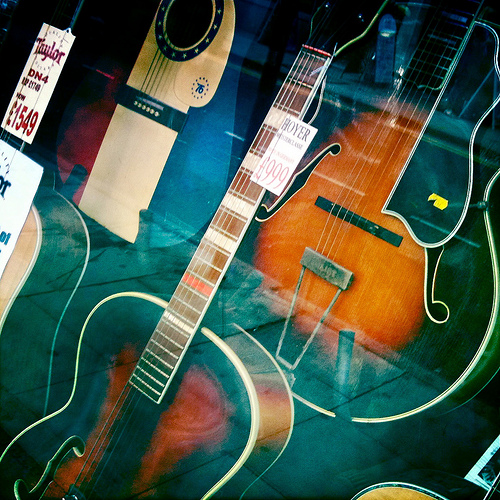Tin Pan Alley
In the area of London historically known as St Giles, lies Denmark Street. Built in 1687 and named after George, Prince of Denmark it became home to a pioneering industry of printers and publishers who created what were known as ‘broadsides’, these were ballad sheets that were distributed far outside of the city’s boundaries. There are still eight of the streets historic buildings surviving today. Over time the area progressed from the distribution of broadsides into the printing and publishing of sheet music, and so began the streets decent into the annals of musical fame.

20th Century Influences
With the passing of the Great War, Lawrence Wright, also known as Horatio Nicholls – his professional name – took up residence in Denmark Street, at number 19, changing the name to ‘Wright’s House’. Though this sounds pretty insignificant, it was from here that the now infamous ‘Melody Maker’ magazine was born in 1926, which he used originally as a method of promoting and selling his own music and songs. It wasn’t long before other music publishers moved into the area and so the reputation of the area began.
The nickname of ‘Tin Pan Alley’ was taken from a similar hive of musical activity based in New York, around the city’s West 28th Street. By the end of the 1940’s practically all of London’s music publishing industry were based in Denmark Street. 1952 saw the arrival of ‘New Musical Express’ (NME) magazine the only rival to Wright’s ‘Melody Maker’ publication which grew to the point that it overtook and absorbed its predecessor.
Rock and Pop History
The first recording studio opened in 1962, owned by session violinist Ralph Elman and soon Denmark Street was the only place to be if you wanted to work in the music industry. Buildings were adapted to accommodate all aspects of the industry, from the ground up every inch of space was dedicated to making, recording and publishing music. Basements were turned into recording studios, ground floor spaces become shops for sellers of instruments and other equipment, back of shop areas were turned into instrument repair shops and at the top of the building were the publishing and distribution offices.
The recording studios in Denmark Street attracted all of the big names including the Rolling Stones, David Bowie and the Small Faces, including artists from overseas like Stevie Wonder and Jimi Hendrix. Artists would come here not only to record, but to shop in the streets musical store with both Pete Townsend and Eric Clapton both buying guitars here.
Tin Pan Alley Today
Denmark Street is still an area rich in musical history and home to some of the best instrument repair shops you could ever hope to find. Now in place of the wealth of recording studios and publishing offices the area hosts intimate music clubs that showcase new acts and new talent each night. Take a walk down Denmark Street and follow in the footsteps of some of the greatest musical performers of all time.

